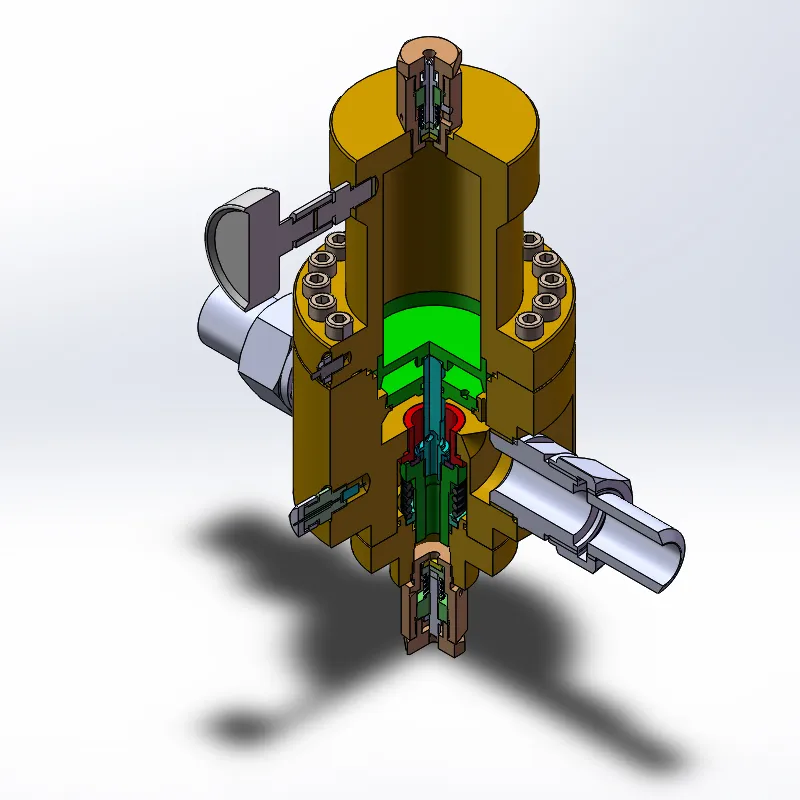
Oct . 11, 2024 20:56
Back to list
Exploring the Benefits and Applications of Modern Gasification Technologies in Renewable Energy
The Gasifier A Revolutionary Approach to Energy Production
In today’s rapidly evolving energy landscape, the quest for sustainable and efficient energy production methods has never been more urgent. One technology that stands out in this pursuit is the gasifier. This remarkable device plays a pivotal role in the conversion of various feedstocks into usable energy, addressing both environmental concerns and energy demands.
What is a Gasifier?
At its core, a gasifier is a device that converts organic or fossil-based materials into a synthesis gas (syngas) through a process called gasification. The feedstock, which can range from biomass like wood chips and agricultural waste to coal or municipal solid waste, is subjected to high temperatures (typically 800-1,200°C) in an oxygen-limited environment. This process breaks down the material into its fundamental components, primarily carbon monoxide (CO), hydrogen (H2), and carbon dioxide (CO2). The resulting syngas can then be used for various applications, including electricity generation, heating, and as a precursor for producing fuels and chemicals.
The Process of Gasification
Gasification involves three primary stages drying, pyrolysis, and reduction. Initially, the feedstock is dried to remove moisture. Following this, pyrolysis occurs, where the material is thermally decomposed in the absence of oxygen, producing charcoal, volatile gases, and tars. Finally, during the reduction stage, the carbon-rich char reacts with steam and residual gases at high temperatures, leading to the production of syngas. The entire gasification process is highly controllable, allowing for the production of syngas with specific compositions tailored for different applications.
Environmental Benefits
One of the most significant advantages of gasification is its environmental impact. By converting waste materials into energy, gasifiers offer a sustainable solution to waste management. Traditional waste disposal methods like landfilling and incineration pose environmental risks, including greenhouse gas emissions and soil contamination. However, gasification significantly reduces the volume of waste while producing clean energy. The syngas generated can be used to produce electricity, which emits fewer pollutants compared to fossil fuel combustion.
Moreover, gasification has a lower carbon footprint compared to coal and oil
. By utilizing biomass and other renewable resources, it helps in sequestering carbon dioxide rather than contributing to the atmospheric accumulation of greenhouse gases. This makes gasifiers an attractive option for countries aiming to meet their renewable energy targets and combat climate change.gasifier

Economic Viability
Beyond environmental advantages, gasifiers offer economic benefits. They can be implemented at various scales, from small community projects to large industrial facilities, making them versatile and adaptable to local energy needs. The ability to use a range of feedstocks, including agricultural residues and urban waste, creates opportunities for local economies by generating jobs in waste collection, processing, and energy production.
Furthermore, as the technology matures and scales up, the costs associated with gasification systems continue to decline. Advances in materials and design have improved efficiency and reduced maintenance needs, making gasifiers increasingly competitive in the energy market. The potential for combined heat and power (CHP) generation also adds economic value by maximizing energy utilization.
Challenges and Future Prospects
Despite the numerous benefits, gasification technology faces challenges. The initial setup costs can be high, and the need for continuous feedstock supply can complicate operations. Additionally, the complexity of syngas cleaning systems is a consideration, as impurities in the gas must be removed before it can be utilized in engines or turbines.
However, ongoing research and development are addressing these challenges. Innovations in process design, feedstock flexibility, and syngas purification are expanding the applicability and efficiency of gasifiers. As governments and industries invest in clean energy technologies, the future of gasification looks promising.
Conclusion
Gasifiers represent a pivotal technology in the transition toward a more sustainable energy future. By converting a diverse array of feedstocks into clean, usable energy, gasifiers not only mitigate waste management issues but also contribute to reducing greenhouse gas emissions. As technological advancements continue, gasification is set to play an increasingly integral role in the global energy landscape, paving the way for a greener and more sustainable planet.
Next:
Latest news
-
Safety Valve Spring-Loaded Design Overpressure ProtectionNewsJul.25,2025
-
Precision Voltage Regulator AC5 Accuracy Grade PerformanceNewsJul.25,2025
-
Natural Gas Pressure Regulating Skid Industrial Pipeline ApplicationsNewsJul.25,2025
-
Natural Gas Filter Stainless Steel Mesh Element DesignNewsJul.25,2025
-
Gas Pressure Regulator Valve Direct-Acting Spring-Loaded DesignNewsJul.25,2025
-
Decompression Equipment Multi-Stage Heat Exchange System DesignNewsJul.25,2025

